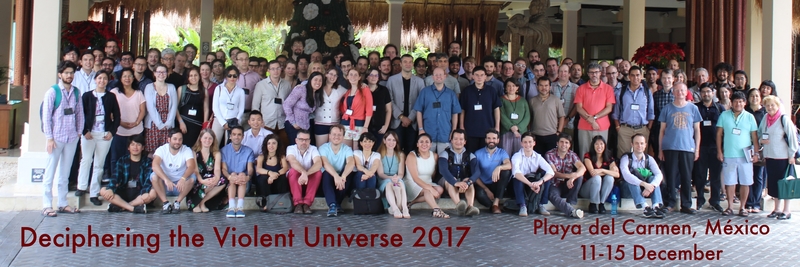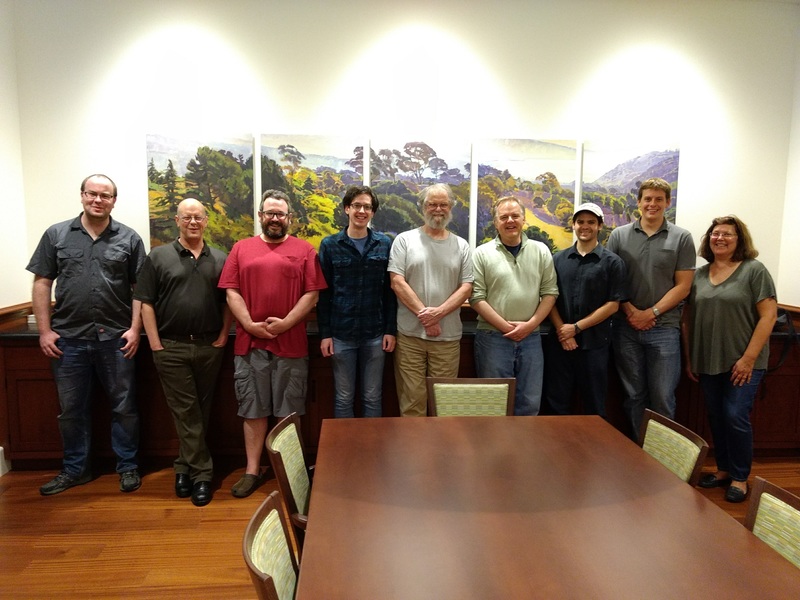06 Feb 2018
The Astrophysical Journal Supplement Series, Volume 234, Issue 2, article id. 34, 50 pp.
Bill Paxton, Josiah Schwab, Evan B. Bauer, Lars Bildsten, Sergei Blinnikov, Paul Duffell, R. Farmer, Jared A. Goldberg, Pablo Marchant, Elena Sorokina, Anne Thoul, Richard H. D. Townsend, F. X. Timmes
We update the capabilities of the software instrument Modules for Experiments in Stellar Astrophysics (MESA) and enhance its ease of use and availability. Our new approach to locating convective boundaries is consistent with the physics of convection, and yields reliable values of the convective core mass during both hydrogen and helium burning phases. Stars with $M<8\,{\rm M_\odot}$ become white dwarfs and cool to the point where the electrons are degenerate and the ions are strongly coupled, a realm now available to study with MESA due to improved treatments of element diffusion, latent heat release, and blending of equations of state. Studies of the final fates of massive stars are extended in MESA by our addition of an approximate Riemann solver that captures shocks and conserves energy to high accuracy during dynamic epochs. We also introduce a 1D capability for modeling the effects of Rayleigh-Taylor instabilities that, in combination with the coupling to a public version of the STELLA radiation transfer instrument, creates new avenues for exploring Type II supernovae properties. These capabilities are exhibited with exploratory models of pair-instability supernova, pulsational pair-instability supernova, and the formation of stellar mass black holes. The applicability of MESA is now widened by the capability of importing multi-dimensional hydrodynamic models into MESA. We close by introducing software modules for handling floating point exceptions and stellar model optimization, and four new software tools -- MESAWeb, MESA-Docker, pyMESA, and mesastar.org -- to enhance MESA's education and research impact.
18 Dec 2017
The Astrophysical Journal, Volume 851, Issue 2, article id. 105, 7 pp.
Josiah Schwab, Héctor Martínez-Rodríguez, Anthony L. Piro, and Carles Badenes
The neutron excess at the time of explosion provides a powerful discriminant among models of Type Ia supernovae. Recent calculations of the carbon simmering phase in single degenerate progenitors have disagreed about the final neutron excess. We find that the treatment of mixing in convection zones likely contributes to the difference. We demonstrate that in Modules for Experiments in Stellar Astrophysics models, heating from exothermic weak reactions plays a significant role in raising the temperature of the white dwarf. This emphasizes the important role that the convective Urca process plays during simmering. We briefly summarize the shortcomings of current models during this phase. Ultimately, we do not pinpoint the difference between the results reported in the literature, but show that the results are consistent with different net energetics of the convective Urca process. This problem serves as an important motivation for the development of models of the convective Urca process suitable for incorporation into stellar evolution codes.
11 Dec 2017
I’m in Playa del Carmen, Mexico for Deciphering the Violent Universe. I’m presenting a poster entitled
Accretion-Induced Collapse and Its Progeniors.
I won “Best Poster” and so also gave a prize talk of the same title.

15 Oct 2017
I’m in Santa Barbara, CA finalizing the forthcoming fourth MESA Instrument paper.
After our 34 hours of editing, we had a celebratory dinner at the KITP residence.

28 Aug 2017
Monthly Notices of the Royal Astronomical Society, vol. 472, issue 3, pp. 3390-3406
Josiah Schwab, Lars Bildsten, Eliot Quataert
We study the evolution of accreting oxygen-neon (ONe) white dwarfs
(WDs), with a particular emphasis on the effects of the presence of
the carbon-burning products $\mathrm{^{23}Na}$ and
$\mathrm{^{25}Mg}$. These isotopes lead to substantial cooling of the
WD via the $\mathrm{^{25}Mg}$-$\mathrm{^{25}Na}$,
$\mathrm{^{23}Na}$-$\mathrm{^{23}Ne}$, and
$\mathrm{^{25}Na}$-$\mathrm{^{25}Ne}$ Urca pairs. We derive an
analytic formula for the peak Urca-process cooling rate and use it to
obtain a simple expression for the temperature to which the Urca
process cools the WD. Our estimates are equally applicable to
accreting carbon-oxygen WDs. We use the Modules for Experiments in
Stellar Astrophysics (MESA) stellar evolution code to evolve a suite
of models that confirm these analytic results and demonstrate that
Urca-process cooling substantially modifies the thermal evolution of
accreting ONe WDs. Most importantly, we show that MESA models with
lower temperatures at the onset of the $\mathrm{^{24}Mg}$ and
$\mathrm{^{24}Na}$ electron captures develop convectively unstable
regions, even when using the Ledoux criterion. We discuss the
difficulties that we encounter in modeling these convective regions
and outline the potential effects of this convection on the subsequent
WD evolution. For models in which we do not allow convection to
operate, we find that oxygen ignites around a density of
$\log(\rho_{\rm c}/\rm g\,cm^{-3}) \approx 9.95$, very similar to the
value without Urca cooling. Nonetheless, the inclusion of the effects
of Urca-process cooling is an important step in producing progenitor
models with more realistic temperature and composition profiles which
are needed for the evolution of the subsequent oxygen deflagration and
hence for studies of the signature of accretion-induced collapse.

